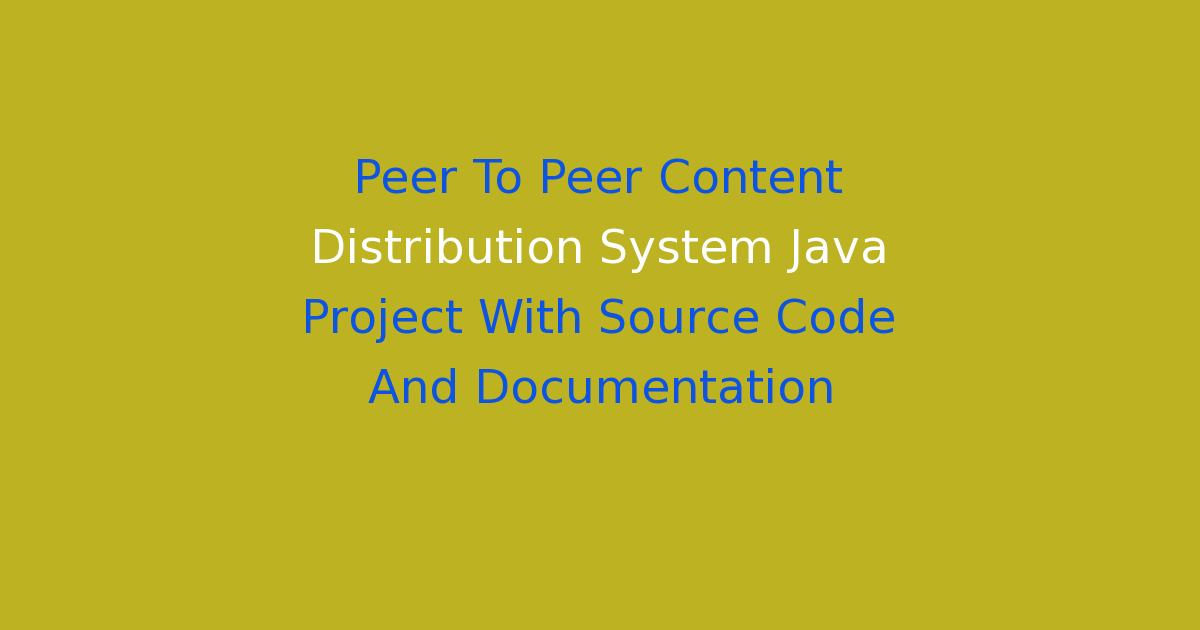Java project on peer to peer content distribution system with complete source code and documentation.
Peer to Peer Content Distribution System Java Project
Introduction:
Peer to peer content distribution system is a decentralized approach in which participants in the network can act as both clients and servers, allowing for faster, more efficient distribution of content. This system eliminates the need for a central server, reducing the risk of bottleneck and making it more resilient to failure. In this project, we aim to create a peer to peer content distribution system using Java programming language.
Problem Statement:
The traditional client-server model has some limitations when it comes to distributing content to a large number of users. The central server can become a bottleneck, leading to slow download speeds and potential downtime. In addition, if the central server fails, the entire network may become inaccessible.
Existing System:
In the existing system, content distribution is done through a central server which stores all the files and serves them to clients upon request. This system works well for small networks, but it becomes inefficient and unreliable as the number of users increases. Users have to rely on the central server for all their content needs, leading to potential performance issues.
Disadvantages:
1. Central server bottleneck: The central server can become overloaded with requests, leading to slow download speeds.
2. Single point of failure: If the central server fails, the entire network may become inaccessible.
3. Limited scalability: The existing system may not be able to handle a large number of users efficiently.
Proposed System:
In the proposed system, we will create a peer to peer content distribution system where every participant in the network can act as a server, sharing content with other users. This decentralized approach will eliminate the need for a central server, making the system more efficient and resilient. Users will be able to download content from multiple sources, increasing download speeds and reliability.
Advantages:
1. Decentralized approach: The peer to peer content distribution system eliminates the need for a central server, reducing the risk of bottleneck and single point of failure.
2. Faster download speeds: Users can download content from multiple sources simultaneously, increasing download speeds.
3. Improved reliability: With content distributed across multiple nodes, the system is more resilient to failure.
Features:
1. Decentralized architecture: Every node in the network can act as a server, sharing content with other nodes.
2. Efficient content distribution: Users can download content from multiple sources, increasing download speeds.
3. Resilient system: The system is more reliable as content is distributed across multiple nodes.
4. User-friendly interface: The system will have a user-friendly interface for easy navigation and usage.
5. Secure communication: Encryption protocols will be used to ensure secure communication between nodes.
Conclusion:
In conclusion, the peer to peer content distribution system offers a decentralized and efficient approach to sharing content among users. By eliminating the need for a central server, the system becomes more resilient to failure and provides faster download speeds. With the proposed system, we aim to create a reliable and user-friendly platform for content distribution.

